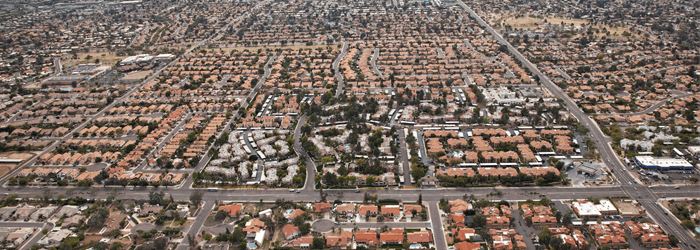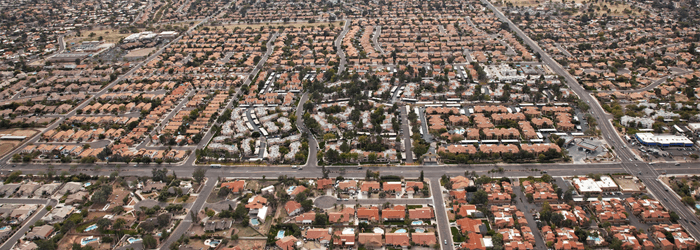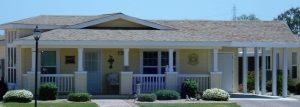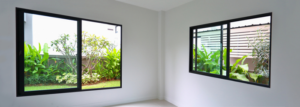There are many types of roofs in Arizona. How do you know which type you have? Do you know their individual strengths? Most importantly, do you know their weaknesses and how to mitigate them?
Tyler Johnson, Johnson Roofing, a Rosie-Certified Partner explains the difference between concrete tile and shingles here in part 1.
Head over to part 2 for information on Flat-Foam & Rolled roofing types.
Concrete Tile
By a large margin concrete tile roofs are one of the most common of the roofs in Arizona. They came into popularity in the late 1980s with the rising popularity of stucco homes. They are a great roof system and will last many years – if they were installed properly and with the proper maintenance, they will often last in excess of 30 years.
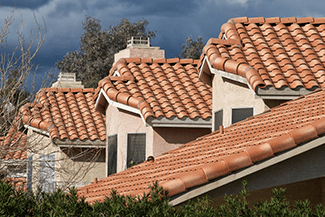
They come in many colors, styles, manufacturers, and profiles. They are cost-effective and versatile in architecture with their variety and many ways to install.
Tile roofs are not waterproof. They are considered water shedding. That means that if you were to lay it flat it would not function as a water barrier. This system relies on the pitch or steepness of the roof to keep water out of your house. This is important as drainage on a tile roof is critical. The main component on a tile roof that keeps you dry is a part that you should never see on a properly tiled roof – the underlayment, also called the felt or tar paper. It is an integral part of the roof that if it were to fail, will lead to substantial damage. Most of the work with tile roof leaks involves repairing the underlayment. The tile is not waterproof. It protects the underlayment from the elements. Tile will shed most of the water and protect the underlayment from the sun, but if installed by itself will NOT keep your house dry.
In our climate, any small issue with either installation and/or maintenance can become a problem.
Some of the most common issues include:
- Broken Tile | The tile protects the underlayment from the elements. If there is just one broken tile it can cause accelerated aging of the underlayment – to the rate of 10 years of aging in just one year of time. Broken tiles are a simple fix. They must be fixed or replaced quickly so they don’t cause larger problems.
- Clogged Drainage | This is another issue caused by the “2 in 1” roof that composes a tile roof. In the valleys and rake walls, the water is designed to drop on flashings. Because these may not be entirely visible, they can plug up and cause water to back up and leak into your house. This is the most common cause of leaks on a tile roof. Clean out the valleys to keep your roof up to snuff.
- Improper flashing | Usually a direct result of the original installation. Instead of proper flashing around pipes, concrete or mortar is used. This will work for a while (i.e. the warranty from the original roofer), but will cause the roof to fail, as it is only a matter of when – not if – the mortar fails and causes a leak. A proper lead or aluminum flashing should be used around all pipe flashings on a tile roof.
- Improper tile spacing | This is probably the biggest killer of roofs. If not properly spaced, excessive water can get onto the underlayment and will destroy your roof in about 30 to 50 percent of the time it would normally last if the tile was installed properly.
There are many other items that should be inspected on an ongoing basis. Thousands of parts on the roof that are constantly moving- if only a little with expansion and contraction, high winds and many other factors. If you neglect to monitor and maintain it, the roofing system will not last as long as it should.
Shingles
Most houses built in Arizona before 1980 and many houses that are outside the metro areas have an asphalt shingle roof. This is also the predominant residential roof of choice in the United States. The reason that shingles are used throughout the U.S. is their comparative low weight compared to tile, their simplicity of installation, and large color variation. It is a tried-and-true roofing system that performs well and is a relatively low-cost option.
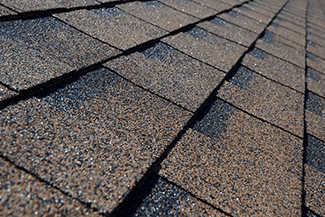
Shingles are typically composed of a fiberglass mat that is saturated with asphalt. Granules are added for color and sun protection. Installed with underlayment similar to tile, shingle underlayment is not as much a water barrier as it is a moisture barrier.
Shingles do not require the amount of maintenance as a tile roof, but they should be checked and maintained periodically.
- Granular Loss: When shingles lose their protective granular covers, they age at a more rapid pace as the sun wears down the asphalt. This can be caused by foot traffic, which we see a lot of around AC units, by aging, and other defects.
- Sealant: There are some areas on a shingle roof that require sealant to be used. That sealant typically has a lifespan of less than the roof and should be refreshed midlife of the roof.
- Debris: A shingle roof is a water shedding roof. That means that if there is debris accumulated on a shingle roof it could cause water to back up and leak. It could also cause accelerated aging of the shingles.
###
CONTENT PARTNER: Johnson Roofing
 Since 2004 Johnson Roofing has been offering the highest quality roofing services in the valley of the sun. You can feel confident that you are getting not only the most professional service available, but the best pricing for your particular need. Johnson Roofing specializes in roofing repairs, replacements, and new roof installations. Doesn’t matter if it is residential, commercial, or industrial, Johnson Roofing can assist you with any home roofing need.
Since 2004 Johnson Roofing has been offering the highest quality roofing services in the valley of the sun. You can feel confident that you are getting not only the most professional service available, but the best pricing for your particular need. Johnson Roofing specializes in roofing repairs, replacements, and new roof installations. Doesn’t matter if it is residential, commercial, or industrial, Johnson Roofing can assist you with any home roofing need.
PODCAST
Tyler Johnson of Johnson Roofing discusses the components of each type of roofing right down to the smallest details. From asphalt shingles to concrete tile, flat roofs, rolled and even metal. The right roof well maintained will pay dividends for years.
Podcast Archive With Expanded Content and Resources
Photo Credits:
- Shutterstock

